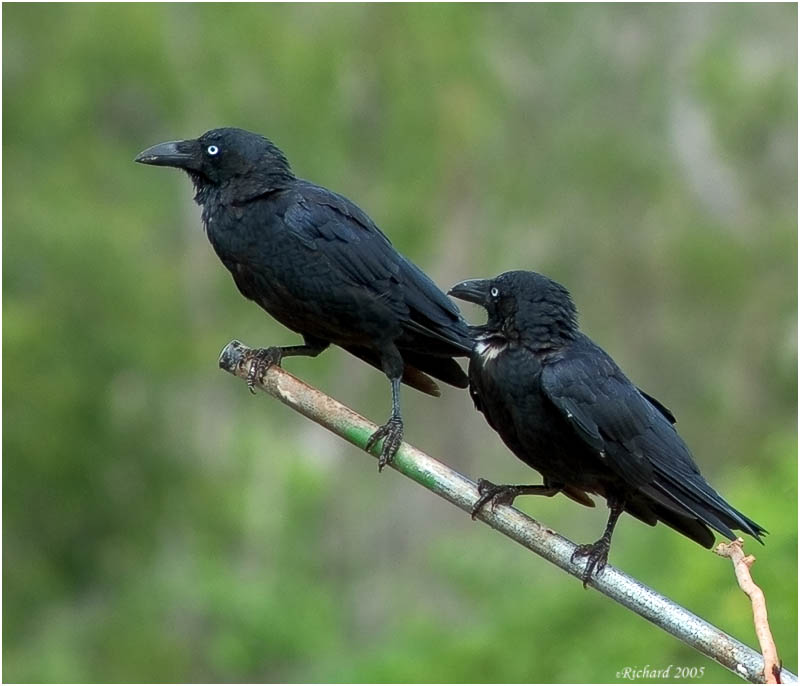ERROR : Server Busy(-1105)
ERROR : Server Busy(-1105)
Torresian Crow (Corvus orru) - Wiki
Torresian Crow
From Wikipedia, the free encyclopedia
Order: Passeriformes
Family: Corvidae
[Photo] Torresian Crow (Corvus orru). Photo by Richard Mc Donald. Torresian Crows, Nhulunbuy NT, Australia, 10th January 2004. http://www.nhulunbuy.com/ Copyright (C) 2004 Richard McDonald
Permission is granted to copy, distribute and/or modify this document under the terms of the GNU Free Documentation License, Version 1.2 or any later version published by the Free Software Foundation; with no Invariant Sections, no Front-Cover Texts, and no Back-Cover Texts. A copy of the license is included in the section entitled "GNU Free Documentation License". |
The Torresian Crow (Corvus orru), also occasionally called the Australian Crow or Papuan Crow in those respective countries, is an Australasian member of the crow genus. An all black crow, it is found in the north and west of Australia and islands to the north.
Taxonomy
The Torresian Crow was described by ornithologist Charles Lucien Bonaparte in 1850, with the Australian subspecies ceciliae described by Mathews in 1912. In Central Australia southwest of Alice Springs, the Pitjantjatjara term for race ceciliae is kaanka. The term wati kaanka refers to a light-fingered man or someone who hangs around suspiciously.
Description
The Torresian Crow is about the same size (50-55 cm in length) as the Eurasian Carrion Crow but with a more robust bill and slightly longer legs. It has the typical white iris of the other Australasian Corvus species but can be distinguished from most (except the Little Crow) by the base of the head and neck feathers being snow white (revealed when blown by a strong wind). It also shuffles its wings after alighting.
Distribution and habitat
The range of the mainland Australian race C. orru ceciliae occupies the tropical north of Australia as far south as Brisbane on the east coast where the species seems to be adjusting well to a city life. Over much of this range, it is simple to distinguish from other species, as it is the only corvid found in northern Australia.
The other three races occur on various islands to the north: C. orru orru (the nominate form from Papua New Guinea and the Moluccas), C. orru insularis from New Britain and nearby islands and lastly C. orru latirostris of Tenimber and Barbar Islands.
It is a little more wary than the southern corvids and seems to recognize the significance of anyone carrying a gun and quickly makes itself conspicuous by its absence.
Behavior
Diet
A typical crow in that it will take just about anything. It has been seen taking stranded fish on the seashore, carrion, human food scraps, fruit and insects. Adaptable and intelligent like its North American, European, African and Asian relatives, it has learned how to kill and eat the introduced poisonous Cane Toad without ingesting the poison by flipping it onto its back and delivering a lethal blow with its powerful bill.
Nesting
Two to four eggs in large stick nest high in a tree.
Voice
Quite different from the Australian Raven. A nasal "uk-uk-uk-uk-uk" or sometimes an "ok-ok-ok-ok".
http://en.wikipedia.org/wiki/Torresian_Crow
| The text in this page is based on the copyrighted Wikipedia article shown in above URL. It is used under the GNU Free Documentation License. You may redistribute it, verbatim or modified, providing that you comply with the terms of the GFDL. |
|

